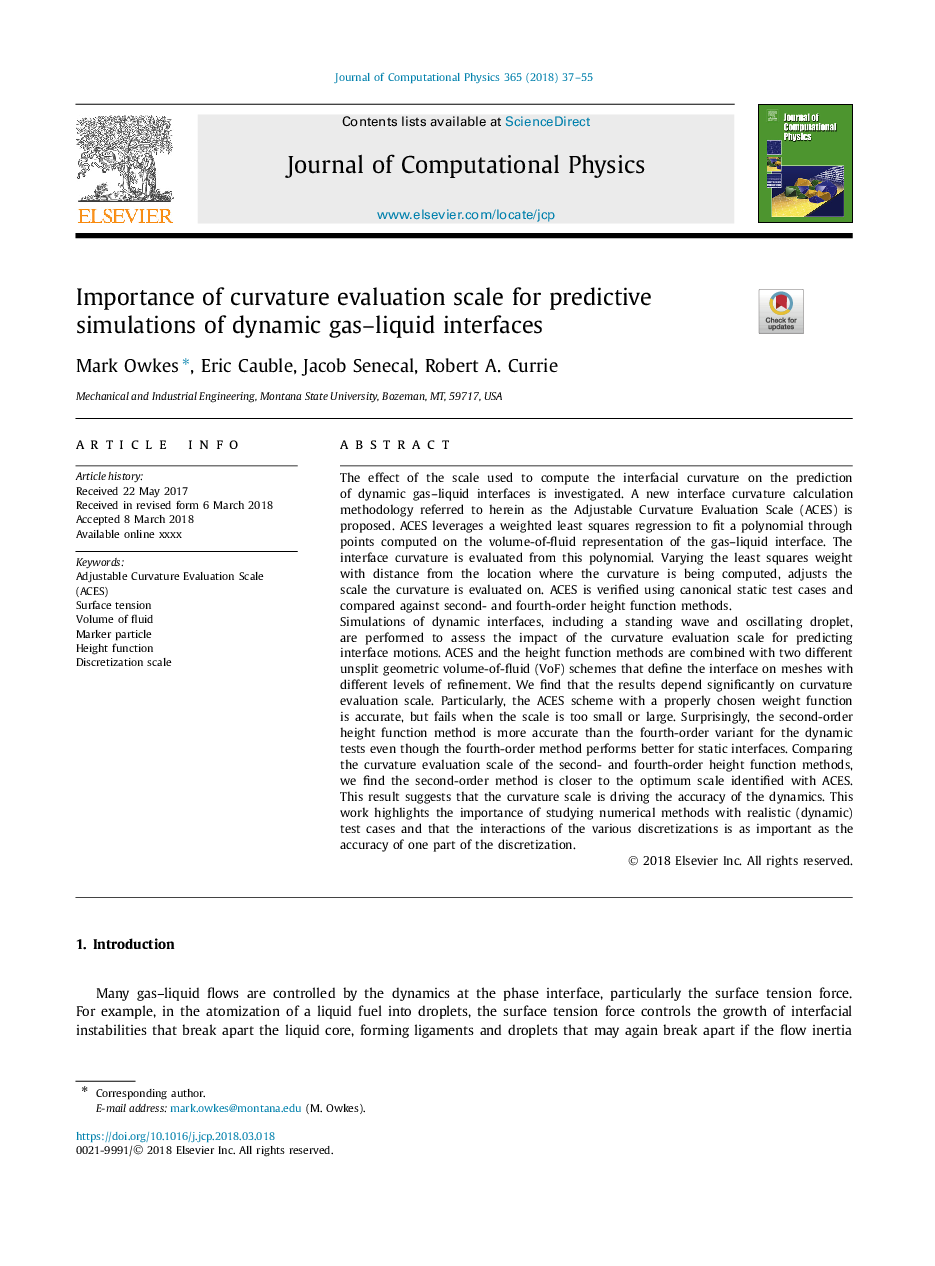| Article ID | Journal | Published Year | Pages | File Type |
|---|---|---|---|---|
| 6928856 | Journal of Computational Physics | 2018 | 19 Pages |
Abstract
Simulations of dynamic interfaces, including a standing wave and oscillating droplet, are performed to assess the impact of the curvature evaluation scale for predicting interface motions. ACES and the height function methods are combined with two different unsplit geometric volume-of-fluid (VoF) schemes that define the interface on meshes with different levels of refinement. We find that the results depend significantly on curvature evaluation scale. Particularly, the ACES scheme with a properly chosen weight function is accurate, but fails when the scale is too small or large. Surprisingly, the second-order height function method is more accurate than the fourth-order variant for the dynamic tests even though the fourth-order method performs better for static interfaces. Comparing the curvature evaluation scale of the second- and fourth-order height function methods, we find the second-order method is closer to the optimum scale identified with ACES. This result suggests that the curvature scale is driving the accuracy of the dynamics. This work highlights the importance of studying numerical methods with realistic (dynamic) test cases and that the interactions of the various discretizations is as important as the accuracy of one part of the discretization.
Related Topics
Physical Sciences and Engineering
Computer Science
Computer Science Applications
Authors
Mark Owkes, Eric Cauble, Jacob Senecal, Robert A. Currie,
